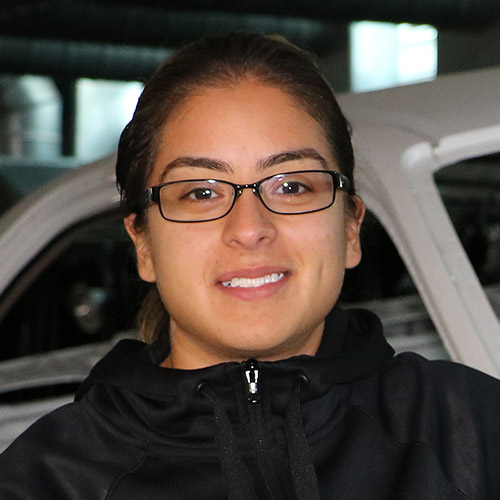Laura Salas grew up around body shops. Her father has been a collision service tech for over forty years.
“He took me to work with him one spring break,” she remembers, “and I got to experience a full body shop work week. I was in love.”
Laura knew exactly what she wanted to do with her life.
“My goal,” she remembers, “was to be a lifelong body technician. I just wanted to work on cars, work with my hands. That was my passion, and it still is.”
She looked at private schools with automotive service programs, but they seemed to cost more and offer less than community colleges. There were community colleges closer to her home in Pittsburg, but none of them had an option to focus on collision.
A teacher in her high school Regional Occupation Program recommended Laura check out the Automotive Services program at Contra Costa College. When she asked around, she found out it had a great reputation.
Laura discovered why soon after she enrolled. She loved the program, instructors and other staff. She especially loved how hands-on the experience was.
“We had a lot of shop time to practice,” she remembers, “so that kept me pretty engaged in the program. It wasn’t just a ton of book work, it was really hands-on.”
“I didn’t want to leave!” she laughs, looking back. “I hear that’s a problem.”
Laura graduated with an Associate in Science Degree in Auto Collision Repair Technology. She worked for other shops for two years, then opened one with her father.
“The program kinda speaks for itself,” she says. “If you put in the work, there’s a thousand opportunities and a thousand things you can get out of it.”
She also joined the automotive services advisory committee as its alumni representative, where she served alongside shop owners, dealers and the President of the California Auto Body Association. The committee’s job is keeping the department up to speed on the demands of the industry.
While serving on that, she heard about an opening for an instructor to teach in the collision program. Now she leads the program that started her career.
“Now, as a professor,” she says, “I get to see the back end of things, the dedication of the faculty, the staff and management. It’s just like, ‘Wow, this is why I liked coming here so much as a student.’”


